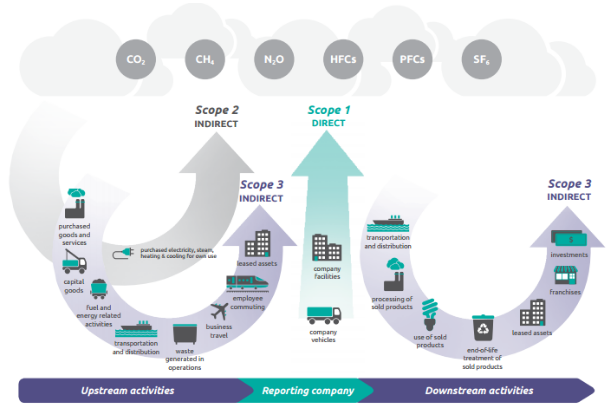Operational boundaries and activity categories
Greenhouse Gas Protocol
An operational boundary defines the scope of direct and indirect emissions for operations that fall within a company’s established organizational boundary. The operational boundary (scope 1, scope 2, scope 3) is decided uniformly for the full company after setting the organizational boundary. The operational boundary can include up to 21 different GHG emission sources or activity categories:
- Scope 1 (4 categories): stationary combustion, mobile combustion, fugitive emissions, process emissions
- Scope 2 (2 categories): purchased electricity, purchased steam/heat/cooling
Scope 3 (15 categories): see figure

(source: GHGP Corporate Standard, p24; GHGP Corporate Value Chain Standard, p32)
Implementation by Carbon+Alt+Delete
Carbon+Alt+Delete supports all 21 activity categories mentioned in the GHG Protocol. The user can tailor the operational boundaries to a specific company by deselecting activity categories which are not relevant or negligible, renaming categories and duplicating categories.
Regardless of these changes, a 1-on-1 relationship with the GHG Protocol and ISO 14064-1 activity categories is always maintained for reporting and compliancy reasons. Therefore, it’s not possible to merge different activity categories together.
Carbon+Alt+Delete uses an activity numbering and ordering for activity categories which matches listings used in official sources.
